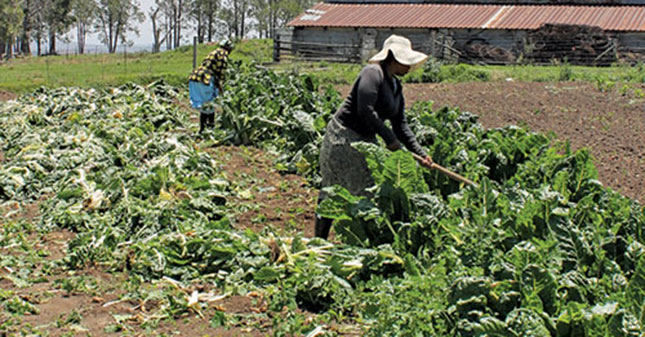
Tell us about Merlog Foods.
Merlog Foods is a leading frozen food distributor in South Africa, supplying both the wholesale and retail markets. About 80% of our product range is meat, including chicken, mutton, lamb, beef and turkey. The remaining 20% consists of vegetables, French fries and value added products. The retail division is aimed at major retailers and we deliver to all the major chains on a store-to-store basis. The other half of our business is trade with wholesale and independent businesses.
What volumes do you move and how important is poultry to your business?
Our business sells in excess of 6 000t of product a month and has a turnover of over R1 billion a year. We employ over 300 people. Probably 65% of our basket is chicken products, of which about 75% is imported.
Why do you import chicken?
SA has a diversified population, with the majority of consumers pressed to feed their families. About 28% are dependent on some form of government grant. Imports fill an important role in providing affordable protein to the consumer. The majority of imported chicken feeds the middle to lower income groups.
Can South African producers not supply enough chicken for the country’s needs?
There is a large chicken production capacity in SA. Imports fill the role of supplying the out-of-ratio products which the consumer requires and assist in balancing supply and demand. The producer has, over time, lost the support of the local consumer and not modified its business model to be world competitive. No consumer should have to pay for ineffective production methods.
Firstly, competitive chicken businesses maximise their return on all cuts of the chicken, and this includes making use of export markets. Secondly, the SA model has been developed to maximise the use of brining which, over the past few years, has resulted in local producers making enormous profits at the expense of the consumer.
Can you explain this further?
Over the past few years, South African chicken producers have injected brine (a salt and water mixture) into chicken. They claim the practice is to increase succulence and tenderness for the consumer, which is misleading. This practice increases the salt content of the chicken and the departments of agriculture and health are both extremely concerned. The local industry processes approximately 65% to 70% of its production into IQF (individually quick frozen) portions. The declared values of brine on the pack range from 26% brine to 30% brine. This equates to an injection of 35% to 43% of the weight of the meat.
What are current regulations regarding brining?
Producers must declare the level of brine on the packaging. The Department of Agriculture, Forestry and Fisheries is currently in the process of reviewing the legislation around the brining and sale of chicken. For the last 15 months to 18 months, talks have been taking place between the government, AMIE and poultry role players regarding changes to legislation. The current proposal is to limit brining to 4%.
What is your goal when it comes to importing chicken?
We fill gaps in the market not supplied by local production. When filling these out-of-ratio requirements, the pricing used to be competitive with the local product. However, in the last two years we have had a complete reversal. Our chicken imports are 20% to 30% more expensive than locally-produced chicken, yet sales of imports are growing every month. This is because the consumer doesn’t like buying water and is seeing a value-for-money proposition in the imported product.
What volumes of chicken are imported, versus locally produced?
Local production amounts to about 2 million tons per year. Imports, excluding mechanically deboned meat (MDM) which SA does not produce, do not amount to 10% of local supplies. Imports are by no means the biggest supplier in SA, contrary to what the anti-import lobby claims.
The local industry is over-supplied with poultry. How do retailers use this to their advantage?
Retailers have absolute power. They know the market is over-supplied, so they play producers off against each other. Local producers are fighting for every cent and battling to find a way out. The only solution is to diversify.
Are you not concerned about the impact of imports on the local industry and jobs?
We are aware of employment in SA. We support the local industry but the rate of growth of imports is less than that of local producers. Poultry imports grew 11,2% from 2006 to 2011 while local industry grew 17,6%. Imports make up less than 10% of local production.
Our product is selling at a 20% to 30% premium compared to local products. The import industry is also an employer of real jobs, and every kilogram imported has to be prepared for sale to the consumer. After seven years of feast, we’re all affected by the current global economic downturn. But these cycles turn and we all have to relook our business models in the lean years. The over-riding factor is that the consumer should not be made to pay for production inefficiencies.
Contact Merlog Foods on 031 716 7600 or email [email protected]













